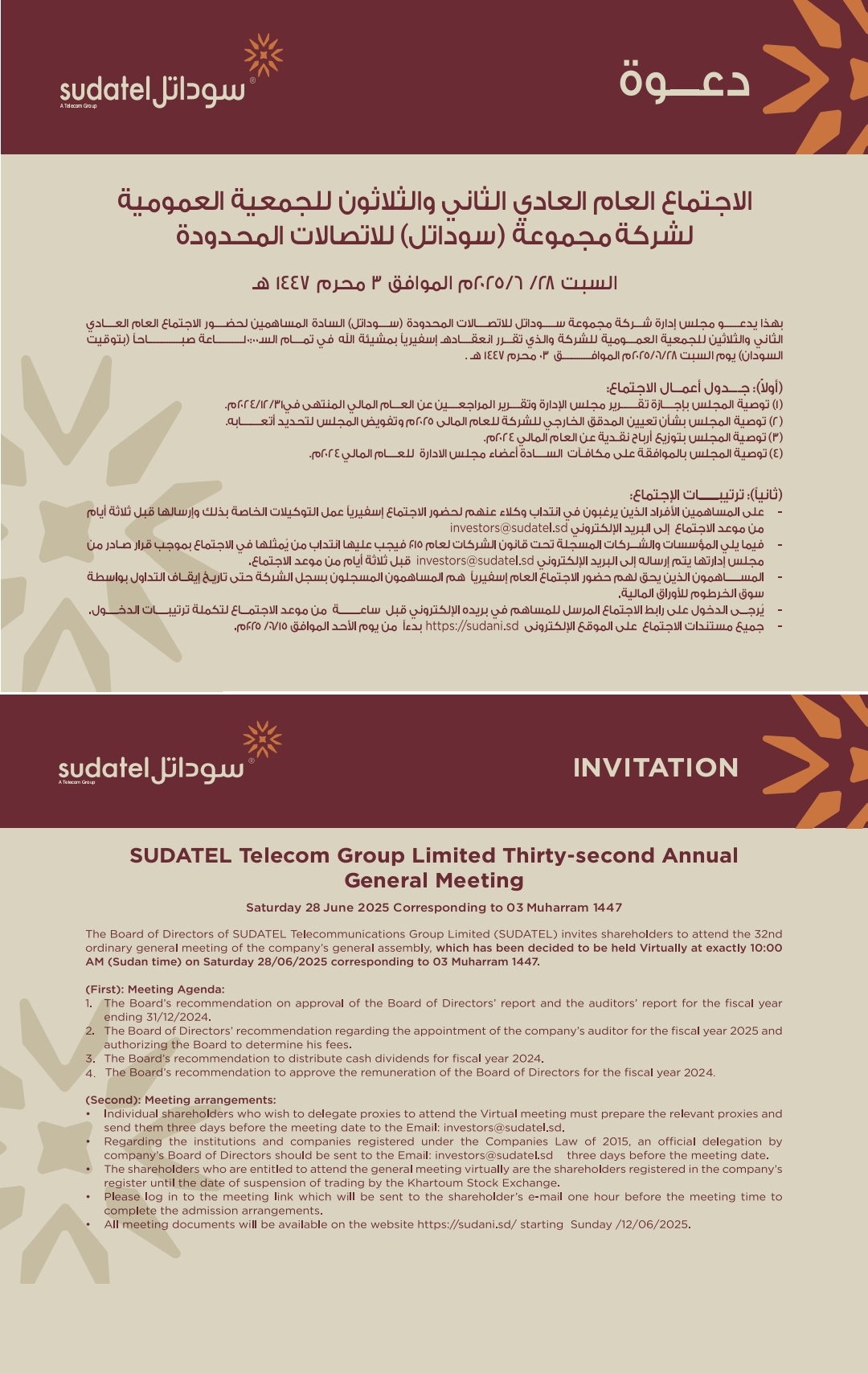د. محمد يوسف قباني يكتب: الوعي المجتمعي السوداني: بين الإرث الثقافي والتحولات المعاصرة. . Sudanese Community Awareness: Between Cultural Heritage and Contemporary Transformations.. Dr. Mohamed Elgabbani..

د. محمد يوسف قباني يكتب: الوعي المجتمعي السوداني: بين الإرث الثقافي والتحولات المعاصرة. .
Sudanese Community Awareness: Between Cultural Heritage and Contemporary Transformations..
Dr. Mohamed Elgabbani..
في قلب القارة الإفريقية، حيث يلتقي النيلان وتتشابك الحضارات، ينبض السودان بإرث ثقافي عميق لا يشبه سواه. إنه بلدٌ تتداخل فيه الأصوات، وتتمازج فيه الألوان، وتتناغم فيه الحكايات التي نسجها الأجداد على ضفاف نيله وكل أنهاره، وفي ظلال النخيل، وتحت سقوف الطين التي احتضنت الحلم والوجع معاً. الوعي المجتمعي السوداني ليس مجرد إدراكٍ للواقع، بل هو مرآةٌ تعكس تاريخاً طويلاً من التفاعل بين الإنسان والأرض، بين الواحد والجماعة، بين الماضي والحاضر، وبين الأمل والانكسار.
منذ آلاف السنين، تشكلت الهوية السودانية من فسيفساءٍ ثقافيةٍ غنية ثرة، تضم أكثر من 500 قبيلة ولغة ولهجة، لكل منها طقوسها، وموسيقاها، وأساطيرها، ونمطها الخاص في فهم الحياة. هذا التنوع لم يكن يوماً عبئاً، بل كان مصدراً للقوة، إذ أسهم في بناء وعي جماعي قائم على التعدد والتسامح والتكافل والتعايش وقبول الآخر.
هنا في السودان الوطن الغالي، لا يُقاس الزمن بالساعات، بل بالحكايات. فكل قرية، وكل قبيلة، وكل بيت طيني يحتفظ بذاكرة حيّة، تُروى على لسان الجدات، وتُغنّى في المناسبات، وتُوشم في تفاصيل الحياة اليومية. الإرث الثقافي السوداني ليس مجرد تراث محفوظ في المتاحف أو الكتب، بل هو كائنٌ حيّ، يتنفس في اللغة، ويتحرك في الطقوس، ويضيء الوعي الجمعي كما تضيء النار في ليالي الشتاء.
من النوبة إلى دارفور، ومن كردفان إلى الشرق، تتنوع الموروثات وتتشابك، لكنها تتوحد في جوهرها: إنها تعبيرٌ عن الإنسان السوداني في علاقته بالأرض، بالزمن، وبالآخر. في الأغاني الشعبية، تُروى قصص الحب والحرب، وفي الأزياء التقليدية تُحاك رموز المواطنة والهوية، وفي النفير والتكايا واللقاءاتالاجتماعية والمناسبات والرقصات الجماعية تُجسّد الروح الجمعية التي لا تنكسر مهما اشتدت العواصف.
الإرث الثقافي السوداني هو ذاكرة الإنسان السوداني وكل السودان، لأنه يحمل تجاربها، انتصاراتها، إخفاقاتها، وأحلامها وانكساراتها. وهو روحها، لأنه يمنحها المعنى، ويغذيها بالقيم التي تحفظ تماسكها: الكرم، الشجاعة، والأمانة والحياء، والتكافل وكل محددات الأمن الإنساني كما ذكرها الأستاذ الجليل محمد عبدالله الطاهر: الشكر والصبر والعفو والاعتذار. في زمن الأزمات، يعود الناس إلى إرثهم ليجدوا فيه العزاء، وليستمدوا منه القوة. وفي لحظات الفرح، يحتفلون به كمن يحتفل بجزء من ذاته.
لكن هذا الإرث لا يعيش في الماضي فقط، بل يمتد إلى
الحاضر، ويتجدد في كل جيل. فالشباب الذين يعيدون غناء الأغاني القديمة بأسلوب حديث، أو يصممون أزياءً مستوحاة من التراث، لا يكررون الماضي، بل يعيدون كتابته بلغة جديدة. وهذا ما يجعل الإرث الثقافي السوداني حيّاً: قابلاً للتطور، دون أن يفقد جوهره. فإن الإرث الثقافي فيه كل يوصل الإنسان بقوميته ولون عرقه وعصبيته وطبقته وطائفته وجماعته، ويمنحه شعوراً بالمواطنة، ويزرع فيه بذور الوعي التي تنمو لتصبح شجرة من الفهم والتفاهم، والتسامح، والقدرة على التعافي والاحتمال. إنه ما يجعل السودان، بكل تنوعه، وطناً واحداً، له قلبٌ نابضٌ بالحكايات، وروحٌ لا تموت.
في المجتمعات الريفية، حيث لا تزال القيم التقليدية تحكم العلاقات، يتجلى الوعي المجتمعي في صور بسيطة وعميقة: في جلسات “الراوي”، في طقوس “الجودية” لحل النزاعات، وفي “الديوان” الذي يجمع الناس على الكلمة الطيبة والمشورة. هناك، لا يُنظر إلى الإنسان بمعزل عن الجماعة، بل يُحتضن كجزء من نسيج اجتماعي متماسك، ينهض إذا تعثر أحد خيوطه.
لكن الزمن لا يظل ساكناً. ومع دخول السودان في دوامة التغيرات السياسية والاقتصادية والاجتماعية، بدأ الوعي المجتمعي يواجه تحديات جديدة. النزاعات المسلحة، الهجرة الداخلية والخارجية، العولمة، والانفتاح الرقمي، كلها عوامل أعادت تشكيل الإدراك الجمعي، وأثارت أسئلة عميقة حول الهوية والمواطنة والوجهة.
في المدن الكبرى، حيث تتسارع الحياة وتتشابك التأثيرات، بدأ يظهر نمطٌ جديدٌ من الوعي، أكثر فردانية، وأشد وصلاً بالعالم الخارجي. كيفيات التواصل الاجتماعي أصبحت منصات للتعبير، وللرفض، وللأمل أيضاً. الشباب السوداني، الذي لطالما كان في قلب الحراك، بات أكثر وعياً بحقوقه رغم صمته، وأكثر جرأةً في المطالبة بالتغيير رغم خوفه، وأكثر قدرة على إعادة تعريف ذاته خارج القوالب التقليدية.
في السودان، لا تمر التحولات مروراً عابراً، بل تترك أثراً عميقاً في الوعي الجمعي، كما تترك السيول بصمتها على الأرض. فبينما يحمل الإرث الثقافي جذوراً ضاربة في التاريخ، تأتي التحولات المعاصرة كرياح عاتية، تهزّ الأغصان، وتختبر صلابة الجذور. إنها لحظة مواجهة بين الثابت والمتحول، بين ما كان وما يجب أن يكون.
لقد شهد السودان في العقود الأخيرة تغيرات متسارعة، بعضها فرضته الظروف السياسية والاقتصادية، وبعضها جاء نتيجة لانفتاح العالم على بعضه البعض. وكما ذكرنا أنفاً، النزاعات، الهجرة، التهميش، والانفصال، كلها أحداثٌ تركت ندوباً في الجسد الإنساني، لكنها أيضاً أيقظت أسئلةً وجودية وجدلية حول البناء والرؤية الجامعة، الهوية، والمواطنة، والعدالة.
مدن تغيرت، ومدن تلاشت، ومدن ازدهرت، بدأت ملامح جديدة تتشكل: شبابٌ يتحدثون بلهجات متعددة، يستهلكون ثقافات مختلفة، ويعيدون تعريف أنفسهم خارج القوالب التقليدية. الإنترنت أصبح نافذة مفتوحة على العالم، لكنه أيضاً مرآة تعكس التناقضات الداخلية. فبين التغريدات الثائرة، والمبادرات الرقمية، والكلمات التي تُكتب على الجدران، يتشكل وعيٌ جديد، أكثر جرأة، وأكثر فردانية، لكنه لا يزال يبحث عن جذوره.
وفي الريف أيضاً، حيث الزمن يمضي ببطء، بدأت التحولات تتسلل أيضاً: التعليم، الإعلام، والهجرة، كلها عوامل أعادت تشكيل العلاقات، ودفعت الناس إلى إعادة التفكير في مفاهيم الجماعة، السلطة، والدور الاجتماعي. لم يعد الإرث وحده كافياً لتفسير الواقع، بل باتت الحاجة ملحّة لقراءة جديدة، تُراعي التغيرات دون أن تنكر الأصالة.
لكن وسط هذا الزخم، لا يغيب الأمل. فالسودانيون، بطبيعتهم، يملكون قدرة فريدة على التكيف، وعلى تحويل الألم إلى طاقةٍ خلاقة. المبادرات الشبابية، الحراك المدني، الخطاب المعتدل، والفنون المعاصرة، كلها تجلياتٌ لهذا التجدد. إنها محاولاتٌ لإعادة بناء الذات الجماعية، لا على أنقاض الماضي، بل على أساس من الوعي، والتنوع، والقدرة على الحلم.
التحولات المعاصرة ليست تهديدا للسودنة، بل فرصةٌ لإعادة اكتشافها. إنها اختبارٌ للوعي المجتمعي: هل يستطيع أن يصمد؟ أن يتطور؟ أن يحتضن الجديد دون أن يتنكر للقديم؟ في السودان، الإجابة لا تُكتب بالحبر، بل تُعاش في تفاصيل الحياة اليومية، في صمود الناس، وفي قدرتهم على تحويل التحدي إلى تجدد.
ومع ذلك، فإن هذا التحول لا يعني القطيعة مع الماضي، بل هو محاولةٌ لإعادة صياغته بما يتناسب مع الحاضر. فالكثير من المبادرات الشبابية، الثقافية والاجتماعية، تستلهم من التراث لتبني مستقبلاً أكثر عدالةً ووعياً.
الوعي المجتمعي السوداني اليوم يقف على مفترق طرق. إنه يواجه تحديات وجودية، لكنه أيضاً يملك أدوات فريدة للتجاوز والتجدد. فالإرث الثقافي ليس مجرد ماضٍ يُستعاد، بل هو طاقةٌ كامنةٌ يمكن أن تُستثمر في بناء مجتمع أكثر وعياً بذاته، وأكثر قدرةً على التعافي الذاتي، وأكثر استعداداً لاحتضان المستقبل دون أن يفقد جذوره.
وفي خضم التحولات، وبين صدى الماضي ونبض الحاضر، ينهض الوعي المجتمعي السوداني كجسرٍ بين الأزمنة، إنه وعيٌ لا يُبنى على الإنكار أو القطيعة، بل على الفهم، والاحتواء، والقدرة على التوازن بين الأصالة والانفتاح. أما الوعي المتجدد، فهو ذلك الذي يملك الجرأة على طرح الأسئلة، على إعادة النظر، وعلى تجاوز المألوف دون أن يفقد البوصلة. وفي السودان، حيث تتقاطع الثقافات وتتشابك الهويات، يصبح هذا النوع من الوعي ضرورة لا أمراً ثانوياً.
إن بناء وعي راسخ ومتجدد يتطلب جهداً جماعياً، يبدأ من التعليم، ويمر بالإعلام، ويُترجم في السياسات، لكنه لا يكتمل إلا حين يصبح جزءاً من الحياة اليومية في طريقة تفكيرنا، في تعاملنا مع الآخر وحتى من نختلف معه، وفي نظرتنا إلى ذواتنا. إنه وعيٌ يعترف بالألم، لكنه لا يستسلم له؛ يحتفي بالاختلاف، لكنه لا يتنازل عن الوحدة؛ يقرأ التاريخ، لكنه يكتب المستقبل. في السودان، لا يزال الحلم ممكناً. فكل جيلٍ يحمل في داخله بذوراً جديدةً، وكل أزمة تفتح باباً للتأمل وفرصاً لا تحصى، وكل لحظة من الخوف والألم والصمت والإخفاق قد تسبق انفجاراً من الإبداع. وما دام هناك من يروي الحكاية،
ويغني للسلام، ويزرع الأمل في أرض عطشى، فإن الوعي سيظل حيّاً، راسخاً، ومتجدداً. إنه وعيٌ لا يُبنى فقط في الكتب أو الخطابات، بل في تفاصيل الحياة اليومية في نظرة الأم التي تزرع الأمل في طفلها، في يد الجار التي تقدم دون سؤال، في صوت المغني الذي يروي حكاية الوطن، وفي حلم الشاب الذي يرفض الاستسلام. في مكالمة تلفونية بين الأجيال مع العم الكبير الجليل حسين عبدالقادر أبوسن، وكنت أساله عن صحته وحاله مع الحرب والنزوح، وكنت أُمني نفسي أن أستمع وافوز بشكوى واحدة منه أو تذمر عن حالنا المأزم، فإذا هو يخاطب خواطري قائلاً: ((الشكية لأهل البصائر عيب))، هذا هو الوعي السوداني الحقيقي عميق، مهذب، حَيِيَ، لماح، متنوع، متجدد، ومليء بالحياة والحكمة والحب والأصالة.
In the heart of the African continent, where the two Niles meet and civilizations intertwine, Sudan pulsates with a profound cultural heritage unlike any other. It is a country where voices intertwine, colors blend, and stories woven by ancestors harmonize on the banks of the river, in the shade of palm trees, and under mud roofs that embrace both dreams and pain. Sudanese social awareness is not merely a perception of reality; it is a mirror reflecting a long history of interaction between people and the land, between the individual and the group, between the past and the present, and between hope and defeat.
For thousands of years, Sudanese identity has been shaped by a rich cultural mosaic, encompassing more than 500 tribes, languages, and dialects, each with its own rituals, music, myths, and way of understanding life. This diversity has never been a burden; rather, it has been a source of strength, contributing to the building of a collective consciousness based on diversity, tolerance, solidarity, coexistence, and acceptance of others.
In Sudan, our beloved homeland, time is not measured by hours, but by stories. Every village, every tribe, and every clay house preserves a living memory, told by grandmothers, sung at special occasions, and inscribed in the details of daily life. Sudanese cultural heritage is not merely a heritage preserved in museums or books; it is a living entity, breathing language, moving through rituals, and illuminating the collective consciousness like a fire on a winter night.
From Nubia to Darfur, from Kordofan to the East, legacies are diverse and intertwined, yet they are united in their essence: they are an expression of the Sudanese people in their relationship with the land, with time, and with others. In folk songs, stories of love and war are told, in traditional costumes symbols of citizenship and identity are woven, and in group dances, the collective spirit is embodied, unshakable no matter how intense the storms.
Sudanese cultural heritage is the memory of the Sudanese people and of all of Sudan, because it carries its experiences, victories, failures, and dreams. It is its soul, because it gives it meaning and nourishes it with the values that preserve its cohesion: generosity, courage, patience, and solidarity. In times of crisis, people turn to their heritage to find solace and strength. In moments of joy, they celebrate it as if celebrating a part of themselves.
But this heritage doesn’t live only in the past; it extends into the present and is renewed with each generation. Young people who re-sing old songs in a modern style or design heritage-inspired fashion are not repeating the past, but rather rewriting it in a new language. This is what makes Sudanese cultural heritage alive: capable of evolving without losing its essence. Cultural heritage is all about connecting people to their
nationality, ethnicity, tribalism, class, sect, and group. It gives them a sense of citizenship and plants seeds of awareness that grow into a tree of understanding, tolerance, and the ability to heal. It is what makes Sudan, in all its diversity, one homeland, with a heart pulsating with stories and an undying spirit. In rural communities, where traditional values still
govern relationships, community awareness manifests itself in simple yet profound ways: in the “rawi” sessions, in the “joudiyya” ritual for resolving conflicts, and in the “diwan,” which brings people together for kind words and advice. There, individuals are not viewed in isolation from the group, but rather are embraced as part of a cohesive social fabric that rises up if one of its threads falter.
But time does not stand still. As Sudan enters a cycle of political, economic, and social change, societal awareness has begun to face new challenges. Armed conflict, internal and external migration, globalization, and digital openness have all reshaped collective perceptions and raised profound questions about identity, citizenship, and destination.
In major cities, where life accelerates and influences intertwine, a new pattern of awareness has begun to emerge: more individualistic and more connected to the outside world. Social media has become platforms for expression, rejection, and hope. Sudanese youth, who have long been at the heart of the movement, have become more aware of their rights despite their silence, more daring in demanding change despite their fear, and more capable of redefining themselves outside traditional frameworks.
In Sudan, transformations do not pass by in passing; they leave a profound impact on the collective consciousness, just as floods leave their mark on the ground. While cultural heritage is deeply rooted in history, contemporary transformations come like violent winds, shaking the branches and testing the strength of the roots. It’s a moment of confrontation between the constant and the changing, between what was and what should be.
Sudan has witnessed rapid changes in recent decades, some imposed by political and economic circumstances, and some resulting from the world’s openness to each other. As we mentioned earlier, conflicts, migration, marginalization, and separation have all left scars on the human body, but they have also awakened existential questions about identity, citizenship, and justice.
Cities have changed, cities have faded, and cities have flourished. New features have begun to take shape: young people speaking multiple dialects, consuming global cultures, and redefining themselves outside of traditional molds. The internet has become an open window to the world, but it is also a mirror reflecting internal contradictions. Between the rebellious tweets, digital initiatives, and poems written on walls, a new consciousness is taking
shape, more daring and more individualistic, yet still searching for its roots. Even in the countryside, where time passes slowly, transformations have begun to creep in: education, media, and migration have all reshaped relationships and pushed people to rethink notions of community, authority, and social role. Heritage alone is no longer sufficient to explain reality; there is an urgent need for a new interpretation that takes into account changes without denying authenticity.
But amid this momentum, hope is not lost. Sudanese, by nature, possess a unique ability to adapt and to transform pain into creative energy. Youth initiatives, civil movements, and contemporary arts are all manifestations of this renewal. They are attempts to rebuild the collective self, not on the ruins of the past, but on a foundation of awareness, diversity, and the ability to dream.
Contemporary transformations are not a threat to Sudanization, but rather an opportunity to rediscover it. They are a test of societal awareness: Can it endure? Can it evolve? Can it embrace the new without rejecting the old? In Sudan, the answer is not written in ink, but rather lived in the details of daily life, in the resilience of the people, and in their ability to transform challenges into renewal.
However, this transformation does not mean a break with the past, but rather an attempt to reformulate it to suit the present. Many youth initiatives, both cultural and social, are drawing inspiration from heritage to build a more just and conscious future.
Sudanese societal awareness today stands at a crossroads. It faces existential challenges, but it also possesses unique tools for transcendence and renewal.
Cultural heritage is not merely a past to be recovered; rather, it is a latent energy that can be invested in building a society that is more aware of itself, more capable of self-healing, and more prepared to embrace the future without losing its roots.
Amidst these transformations, between the echoes of the past and the pulse of the present, Sudanese social consciousness rises as a bridge between the ages. It does not break or erode, but rather renews itself like the Nile in its floods and takes root like mountains in the face of the wind. It is a consciousness built not on denial or
estrangement, but rather on understanding, inclusion, and the ability to balance authenticity and openness. A deeply rooted consciousness does not mean stagnation, but rather constancy in values that have proven their worth over time: solidarity, human dignity, patience, and justice. A renewed consciousness, on the other hand, has the courage to ask questions,
reconsider, and transcend the familiar without losing its compass. In Sudan, where cultures intersect and identities intertwine, this kind of consciousness becomes a necessity, not a secondary matter.
Building a deeply rooted and renewed consciousness requires a collective effort, beginning with education, moving through the media, and translating into policy. But it is not complete until it becomes part of daily life: in the way we think, in our
interactions with others, and in our view of ourselves. It is a consciousness that acknowledges pain, but does not surrender to it; that celebrates difference, but does not surrender unity; that reads history, but writes the future. In Sudan, dreams are still possible. Every generation carries within it new seeds, every crisis opens a door to contemplation, and every moment of silence may precede an explosion of
creativity. As long as there are those who tell the story, sing for peace, and plant hope in a parched land, consciousness will remain alive, steadfast, and renewed. It is a consciousness that is not built solely in books or speeches, but in the details of daily life: in the gaze of a mother who plants hope in her child, in the hand of a neighbor who reaches out without question, in the voice of a singer who tells the story of the homeland, and in the dream of a young man who refuses to surrender. This is the true Sudanese consciousness: deep, diverse, renewed, and full of life.









